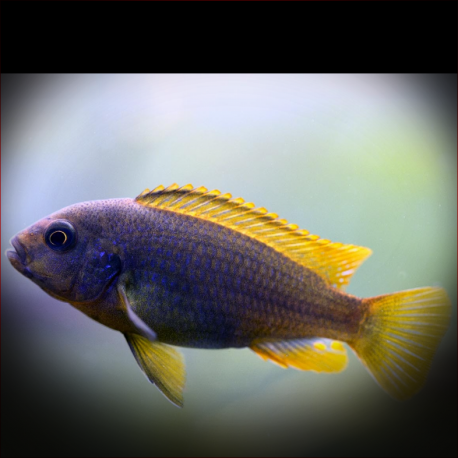More info
Datasheet
| Minimum Tank Size | 80 litres / 21.13 US gallons |
| Maximum Size | 10.0cm / 3.94inches |
| Temperature | 25°C / 77.00°F - 29°C / 84.20°F |
| Hardness | 10-25ºdH |
| pH | 7.5-8.8 |
General DescriptionThe Rusty Cichlid, scientifically known as Iodotropheus Sprengerae, is a dwarf Mbuna species that appeals to beginner hobbyists due to its mild temperament and distinctive coloration, making it suitable for smaller aquariums. Endemic to Lake Malawi, particularly the southern region near islands like Boadzulu, Chinyankwazi, and Chinyamwezi, this species is a member of the Cichlidae family within the Pseudocrenilabrinae subfamily. With a maximum size of 10.0cm, it requires a minimum tank size of 80 liters and predominantly inhabits the shallow, rocky shorelines of the lake.
Aquarium SetupFor optimal care, a tank housing Rusty Cichlids should feature sand substrate and rock formations creating caves and hiding spots. While hard water-tolerant plants like Vallisneria or Anubias can be included, they are not essential. Maintaining excellent water quality through a high-quality external filter and regular partial water changes is crucial for their well-being. Water conditions should ideally have a hardness of 10-25°dH, a pH range of 7.5-8.8, and a temperature between 25-29°C.
BehaviourKnown as one of the more peaceful Mbuna species, the Rusty Cichlid is one of the smallest within its group. It can be easily overshadowed by larger, more robust tankmates, so compatibility should be carefully considered. While being territorial to some extent, this species exhibits less aggressive behavior compared to other Mbuna. They can coexist with species like Aulonocara, Protomelas, Copadichromis, Labidochromis, and even some peaceful Tanganyikan cichlids in a well-chosen community setup.
Feeding and DietAs an omnivorous species, the Rusty Cichlid accepts a variety of foods but thrives on a diet rich in vegetable matter such as Spirulina flakes and blanched spinach. This should be supplemented with small live and frozen foods like bloodworms, Daphnia, and brine shrimp to ensure a balanced nutritional intake and long-term health.
Reproduction & DimorphismA polygamous maternal mouthbrooder, this species reaches sexual maturity at a mere 1.5" in length, making it an ideal choice for breeding beginners. Breeding tanks should have sufficient space and appropriate furnishings, with a recommended pH of 8.0-8.5 and a temperature of 77-80°F. Males establish territories around potential spawning sites, displaying vibrant colors to attract females. The female carries the eggs for up to three weeks before releasing free-swimming fry, which are capable of feeding on small organisms immediately. Sexual dimorphism is subtle, with males typically larger, more colorful, and bearing more egg spots on their anal fins.
Habitat and DistributionIn its natural habitat, the Rusty Cichlid predominantly occupies the shallow, littoral zones of rocky shorelines in Lake Malawi. Endemic to the lake, it is specifically found in the southern region surrounding islands like Boadzulu, Chinyankwazi, and Chinyamwezi.

